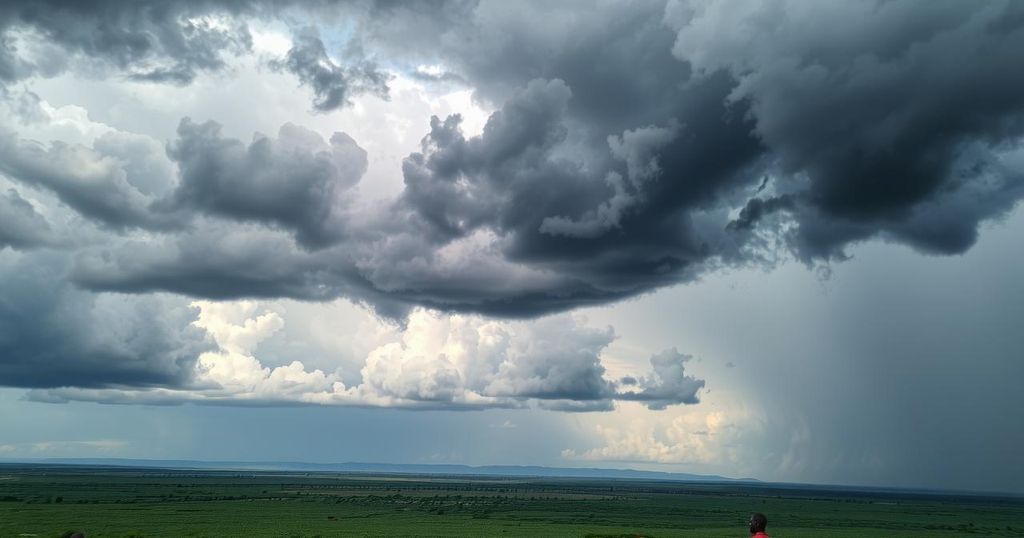Kenyans Advised to Prepare for Increased Rainfall as Wet Season Begins

The Kenya Meteorological Department warns Kenyans to prepare for increased rainfall as the wet season begins, driven by the Madden-Julian Oscillation. Various regions, including Nairobi and those around Lake Victoria, are anticipated to experience isolated heavy rains. The department urges caution, especially in flood-prone areas, while farmers are encouraged to consult local extension officers for preparation.
The Kenya Meteorological Department has issued a warning for residents to prepare for increased rainfall as the wet season begins. This anticipated rainfall is primarily driven by the Madden-Julian Oscillation (MJO), a significant weather pattern that travels along the equator approximately every 30 to 60 days, bringing rain and storms. The department has forecasted that isolated heavy rains will continue across various regions of the country.
Areas particularly likely to receive rain include Western Kenya, the Rift Valley, and the Central Highlands, including the capital city, Nairobi. Additionally, rainfall is expected to affect the Lake Victoria Basin, parts of the South-Eastern Lowlands, sections of the Coast, as well as North-Eastern and North-Western Kenya. The ongoing rainfall is critical as it marks the onset of the rainy season in these regions.
Director of Meteorological Services David Gikungu mentioned that the MJO is predicted to enter phase two starting from the second week of March, potentially resulting in an earlier onset of rains in certain areas. Recent heavy downpours were experienced across the country, with significant rainfall recorded during the night following Sunday, March 9, 2025, continuing until Tuesday, March 11, 2025.
The Met Department has advised residents to remain vigilant and implement necessary precautions, especially in flood-prone areas. Farmers are encouraged to prepare for the rains by consulting with local agricultural extension officers. According to the March 2025 weather outlook released on February 28, most regions are expected to experience near to above-average rainfall, offering relief to areas that have recently suffered from dry conditions.
In summary, the Kenya Meteorological Department has indicated that Kenyans should brace for increased rainfall as the wet season commences, driven by the Madden-Julian Oscillation. Various regions, including Western Kenya, the Rift Valley, and Central Highlands, are expected to receive significant precipitation. The department emphasizes the importance of preparedness for potential flooding and advises farmers to engage with local agricultural authorities. The forecasted rains are expected to be a welcome change for many areas recovering from drought.
Original Source: eastleighvoice.co.ke







